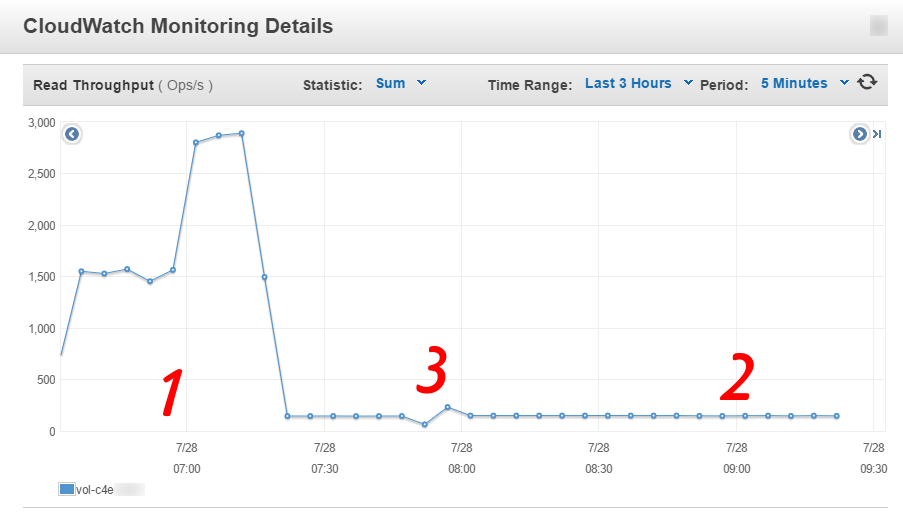I’d like to present you the book I am trying to finish reading for some time now; a very dense book, with good practices and interesting details on how to keep planet-wide systems up & running with a bunch of very well prepared people.

What are the lessons one needs to walk away with, from this book? A few bullets:
I have mentioned before that regular EBS storage in AWS works with a system of credits that are accrued when the volume is idle and are spent when the operation rate requested on the volume grows over the predefined baseline. One can find the detailed explanation in the AWS documentation. This limitation came as an unexpected surprise during the failed project I was part of 18 months back.
A few days ago while syncing data from a large volume to another, larger volume, I ran into the same problem as well and I decided to capture the state to make things clear for everybody (well, people that are reading this blog).
The CloudWatch read throughput (metric name: VolumeReadOps) graph looked like this during the data sync:

Amazon CloudWatch is the monitoring tool for all the Amazon Cloud services. It offers both White Box and Black Box monitoring for services managed by Amazon and can be extended to work with user-generated monitoring data.
This text covers the integration of a simple MySQL monitoring script with Amazon CloudWatch.
MySQL Monitoring
Let’s assume that we want to monitor the number of active connections to the MySQL server and have an indication on when this figure becomes close to the maximal value defined in the configuration file (max_connections). In order to be portable, we may want to also report this value to the monitoring engine, even if it’s unlikely that a change may occur without explicit human intervention.
MySQL provides 3 numeric figures we may be interested in: